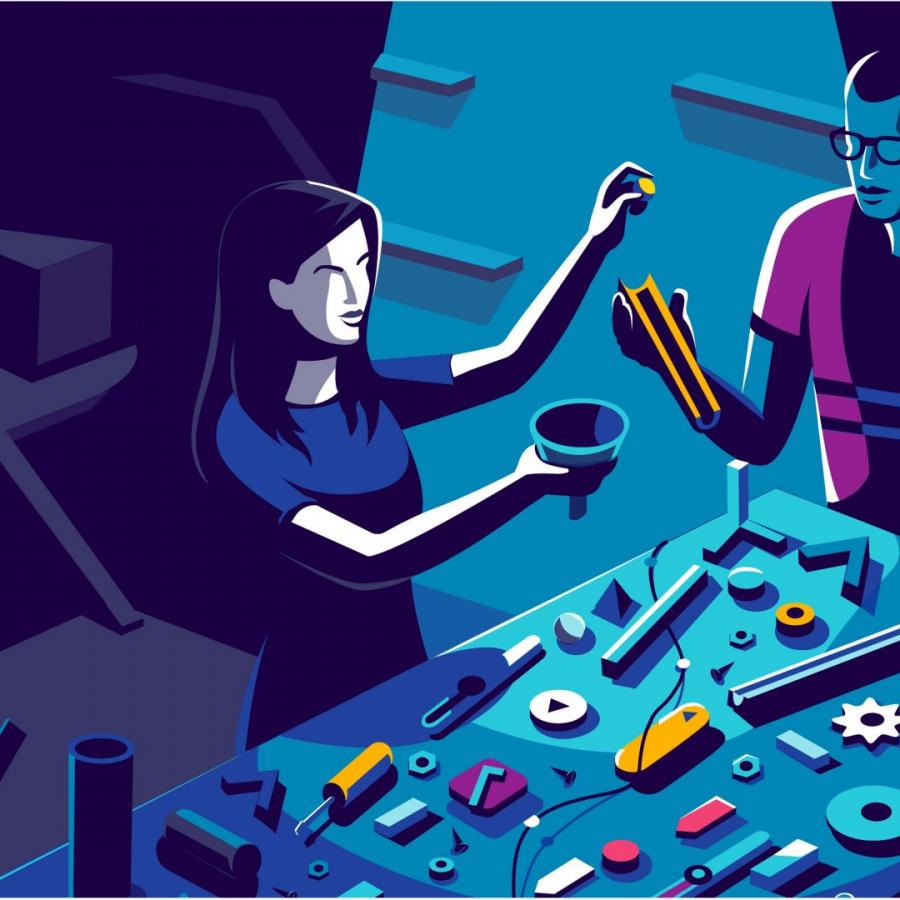by AoiroStudio
Last week, we have shared the latest resource from InVision DesignBetter with the Animation Handbook". In addition to the book, you get video and audio interviews with leading designers at Google, Headspace, Lyft, Zova Fitness, and more. Did you get a chance to read yet? If not, we are exclusively sharing a chapter review for you all entitled: Principles of Animation. Let's have a read, shall we?
 Image courtesy by InVision DesignBetter
Image courtesy by InVision DesignBetter
More Links
- Download the entire Animation Handbook
Chapter 2: Principles of Animation - Preview
Embellishment is innate to storytelling. When we share our stories—small or large—we’re trying to make others feel as though they’ve lived through the experience. By refining and embellishing, we tell untruths that help do our stories better justice; by adding touches of over-the-top whimsy we make them more emotional and thereby memorable; by bending the physics of time and motion we bring something otherwise inanimate closer to life, where we’re better equipped to relate to and understand it. To animate something is to bring it to life.
Where animation makes stories more relatable to audiences, it also helps us understand and trust the digital “magic” around us by filling the gaps between cause and effect.
...As digital systems evolved and miniaturized, the simple turned complex. The reassuring sound of gears turning or the acrid smoke of a short circuit was replaced with silent workings and failings; our machinery became more inanimate. What once moved and could be seen became small, delicate, and hidden with a layer of software atop. We built the magical disconnected levers and knobs of software to control the machinery within.
Arthur C. Clarke’s third law states that “any sufficiently advanced technology is indistinguishable from magic.” While the idea of magic is whimsical and powerful, it can be uncomfortable when it operates in the world around you outside of your control or understanding. These days, the mechanics and inner workings of most tools are invisible. While they’re built upon physical principles, the technological underpinnings that allow our phones to know who we are with invisible laser light, or hear our requests from across the house with far-field microphones, are enough removed from our understanding to essentially be magic.
In digital systems, almost all of our constraints are lifted, and nearly anything is possible. Crafting magic is well within our reach, and by following some established anmation principles, we can make our magic feel more familiar and analog to others. We can make the profound approachable.
Principles - Preview
Animation is a design tool we can use to lend physicality and tangibility to our abstract digital creations by making them feel more analog and familiar. There are a handful of established animation principles to keep in mind when telling stories—even the tiny, causal stories we see in digital gestures and interactions.
While animation has found a new home in digital interfaces, its classical history is rooted in film and entertainment. The veritable masters were at Walt Disney, where Frank Thomas and Ollie Johnston’s book, Disney Animation: The Illusion of Life, established 12 famous principles of animation. While film animation isn’t exactly the same as digital interface animation, we can look to, learn from, and rely on film animation’s established terminology and principles.
To read more abut the seven key animation principles that inform interface design, Download the entire Animation Handbook.
About Ryan McLeod
Ryan McLeod is a puzzle maker and self-taught designer with a masters in Computer Science. He designs and develops the infamous and infuriating game Blackbox, which won an Apple Design Award in 2017. In addition to being a game, Blackbox has also become a testbed for interaction design and accessibility innovation.
